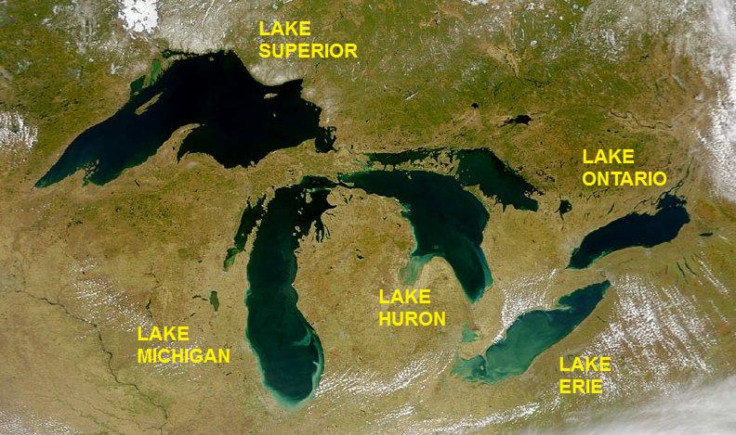Record Low UD Great Lakes Water Level Hampering Movement In Vital Waterway That Connects The World To US, Canadian Interiors

Remnants of Tropical Storm Andrea dropped record amounts of rainfall across the Northeastern U.S. in recent days, and also swelled the Mississippi River, but it’s the nearby Great Lakes that could really use more of that spring precipitation.
Thanks to record drought conditions, all five Great Lakes are below their running averages, creating costly headaches for the movement of cargo barges that can’t carry their maximum loads because of shallow points along the 2,500-mile St. Lawrence Seaway System of locks and canals connecting the Atlantic Ocean with the Great Lakes. The situation is also creating bottlenecks along the routes, slowing down the delivery of cargo, which is typically commodities like iron ore and grain.
“The monthly mean was the lowest ever recorded, going back to 1918,” Keith Kompoltowicz, the chief of watershed hydrology at the Detroit district of the Army Corps of Engineers, told the New York Times, referring to the hardest hit of the five lakes: Huron and Michigan.
The economic impact is huge.
According to Martin & Associates, an economic consulting firm that studies transport infrastructure, the St. Lawrence Seaway System was responsible for moving 164 million metric tons of cargo, generating $33.6 billion in business revenue by the firms that handle the traffic. More than $2.3 billion in personal income is directly tied to smooth movement of cargo on both sides of the Canadian border. Slower movement of barges carrying less than their maximum loads also affects the cost of the commodities they carry, raising the price of raw materials used to make goods.
Approximately 60 percent of the nation's grain and a fifth of its coal is moved on the country's waterways, according to American Waterways Operators, a 350-member trade group based in Arlington, Va.
It’s not just the weather causing trouble.
Even without the two mild winters that starved the lakes of melted snow, the nation’s waterway infrastructure is crumbling. Harbors are being neglected and channels are not being dredged adequately, according to numerous groups including the American Society of Civil Engineers (whose 2012 report on failing U.S. infrastructure can be read here) and the National Farm Bureau, which claims that 55 percent of U.S. locks were built before 1963, with nearly half considered “functionally obsolete.”
Last summer, barge traffic was at a virtual standstill near Greenville, Miss., for days when the worst drought in half a century caused the Corps of Engineers to perform emergency dredging to open up enough of the Mississippi River channel for traffic to pass.
In recent days the Mississippi has had the opposite problem: Waterways crested between Iowa and southern Missouri and Illinois. When waterways reach flood stages traffic is halted to prevent barges from hitting levees as the currents run faster.
© Copyright IBTimes 2024. All rights reserved.




















